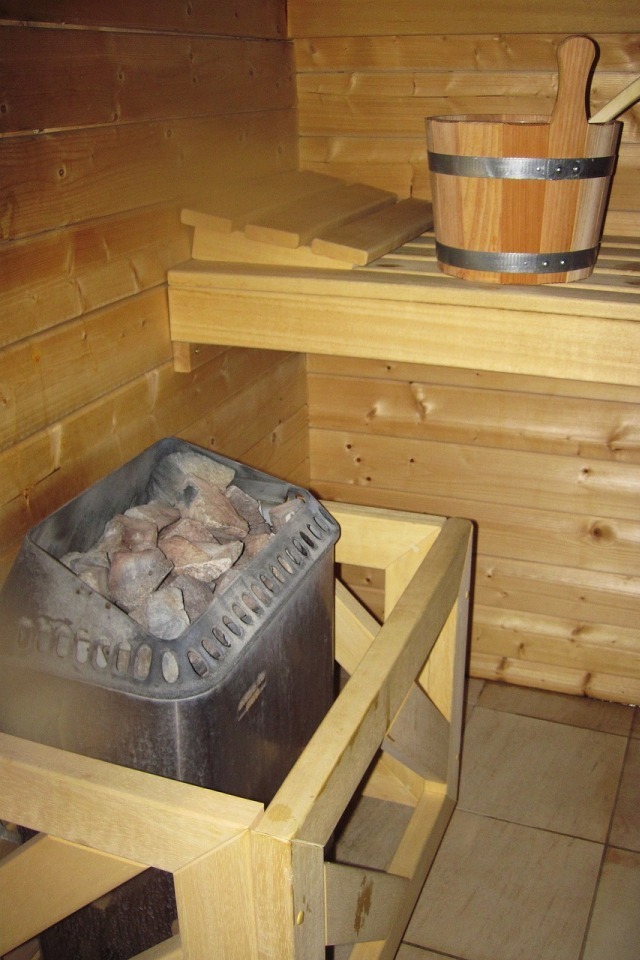The sauna, a heat therapy that has stood the test of time, traces its origins back thousands of years to ancient civilizations. From the early sweat lodges of Native Americans to the Finnish sauna tradition, the practice of using heat for relaxation, purification, and socialization has been a cornerstone of many cultures. Today, the sauna has evolved into a modern wellness practice, offering a range of benefits for both the body and mind. As we delve into the history and modern applications of the sauna, we discover a timeless tradition that continues to provide comfort and rejuvenation to people around the world.
The Benefits of the Sauna
Next time you go to the gym, don’t skip the sauna afterward. Try not to consider it an indulgence, even though it is soothing. Instead, consider it a wise option for your heart health.

What is sauna bathing?
Saunas have existed for thousands of years. Sauna bathing is a heat therapy type of bathing in which a chamber is heated using wood, electricity, or infrared light waves. Saunas can attain temperatures ranging from 158 to 212 degrees Fahrenheit. It’s considered dry heat since the relative humidity in a normal sauna is between 10% and 20%.
Many people use saunas to relax and improve their overall health. Experts believe sauna bathing may help with arthritis, chronic fatigue, and cold symptoms.
• Symptoms may include muscle pain, psoriasis, and stress.
Sauna and cardiovascular health
Sitting in a sauna may be particularly beneficial to your heart. The heat can elevate your skin’s temperature and generate excessive perspiration; a pint of sweat can be produced only a few minutes in the sauna. As your body works to cool itself, your heart rate rises and may reach 100-150 beats per minute.
Sauna bathing (with an increased heart rate) encourages your blood vessels to open, increasing circulation and lowering stress levels, similar to the effects of low to moderate exercise. As a result, sitting in a sauna is also beneficial.
Blood Pressure
Over the last few decades, research has shown that sauna bathing has an immediate favorable effect on blood pressure. However, combining sauna bathing with exercise will provide much greater benefits. According to recent studies, Using the sauna for 15 minutes three times a week after a workout improves blood pressure more significantly than exercise alone.

Total cholesterol
Lowering your total blood cholesterol by 10% reduces the risk of heart disease by 30%. High blood cholesterol, a waxy substance found in cells, is a major risk factor for cardiovascular disease. The good news is that sweating can increase your good cholesterol (HDL), which improves your total cholesterol.
Exercise will undoubtedly make you sweat, and sauna bathing on its own can lower total cholesterol levels. However, combining the two—sitting in a sauna after your workout—has a greater impact on total cholesterol.
Cardiovascular and respiratory fitness level
Cardiovascular respiratory fitness (CRF) refers to your body’s ability to supply oxygen to its muscles and organs during physical exertion. A greater CRF level may reduce your risk of heart disease and death.
Regular exercise is one method for improving CRF levels. Regardless of whether your CRF levels are high or low, data indicates that sauna bathing after exercise is good. If your CRF is low, exercise combined with 15 minutes in the sauna improves it more than exercise alone. If your CRF is high, incorporating sauna bathing into your training program will lower your risk of heart-related death, including sudden cardiac death.
Risk of dying from heart disease
Heart disease accounts for one out of every five deaths in the United States. Sudden cardiac death (SCD) frequently occurs without warning signals. According to research, sauna bathing may help reduce your chance of developing heart disease. One study monitored 2,300 sauna bathers for 20 years and discovered that those who used the sauna more regularly (four to seven times per week) had decreased death rates from heart disease and stroke.

Use a sauna safely
Sauna bathing is fairly safe. To avoid sauna-related health risks, drink plenty of water before, during, and after use to prevent dehydration and replenish lost fluids.
• New sauna users should start with shorter (5-10 minute) sessions and gradually increase to 20 minutes.
• Avoid drinking before or during sauna bathing as it can lead to dehydration.
If you are pregnant or have low blood pressure, consult your primary care physician (PCP) before using a sauna, as sauna bathing can cause blood pressure to drop.

Interesting Sauna Facts:
- Saunas in Space: Astronauts use a sauna-like device called a “space sauna” to help maintain muscle mass and bone density during extended stays in microgravity.
- Sauna World Record: The longest sauna marathon lasted for 12 hours and was achieved by Teppo Meriläinen in Finland in 2018.
- Mobile Sauna: In Finland, there is a tradition of having mobile saunas that can be transported to different locations, including festivals and events.
- Sauna Competitions: There are sauna competitions in which participants see who can endure the highest temperatures for the longest time. However, these have been discontinued due to safety concerns.
- Ice Sauna: In some places, saunas are built partially or entirely out of ice. These saunas provide a unique experience of extreme temperatures.
- Sauna Etiquette: In Finland, it’s common for families to give birth in saunas, and in some cultures, it’s customary to give birth in a sauna-like setting for its purported health benefits.
- Sauna World Championships: There used to be an annual event in Finland called the Sauna World Championships, where participants would sit in a 110°C (230°F) sauna until they couldn’t take the heat anymore. However, the event was discontinued after a competitor died in 2010.
- Sauna for Healing: Some cultures believe that saunas have healing powers and can help with everything from aches and pains to detoxification.
- Sauna Diplomacy: The idea of “sauna diplomacy” refers to the practice of politicians and diplomats using saunas to relax and build relationships in a more informal setting.
- Sauna Births: In some cultures, it’s traditional to give birth in a sauna-like environment, believed to have health benefits for both the mother and the newborn.
Closing Thoughts from One Motion Forward:
As we reflect on the rich history and modern resurgence of the sauna, it’s evident that this ancient practice has transcended time to become a cherished part of many cultures. Whether you prefer the convenience of a modern infrared sauna or the traditional wood-fired sauna, the key is to take your time to steam or get hot, allowing the heat to penetrate your body and soothe your soul. So, the next time you step into a sauna, embrace the warmth, relax, and let the stress melt away, knowing that you’re partaking in a practice that has brought comfort and wellness to people for millennia. Namaste.
Step into Your Stride: Accept the Journey with One Motion Forward!
